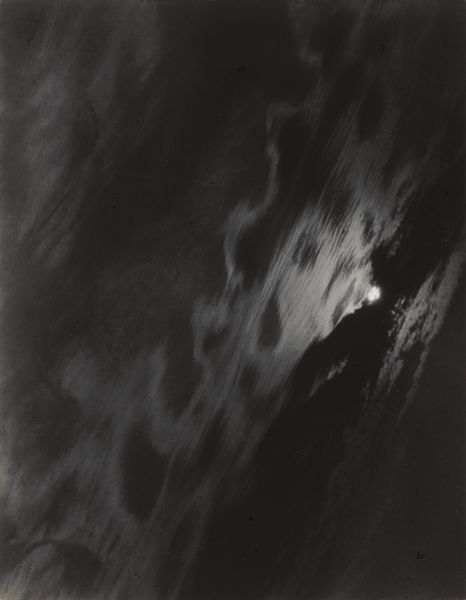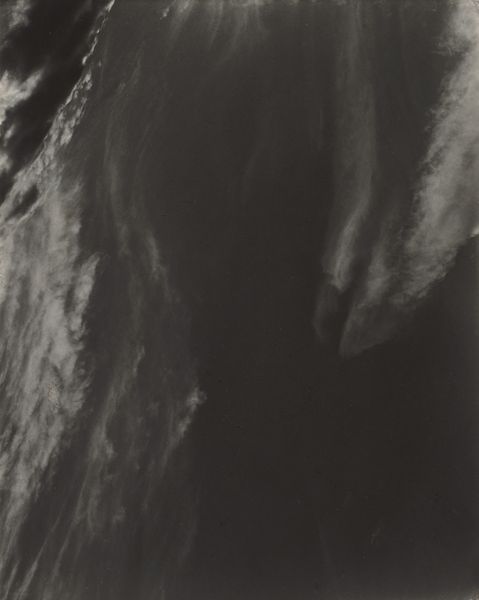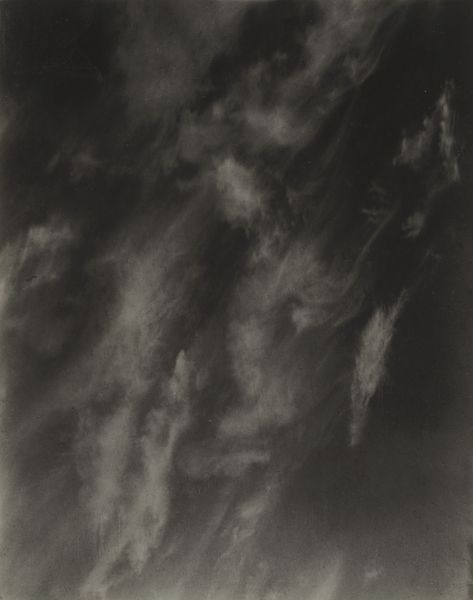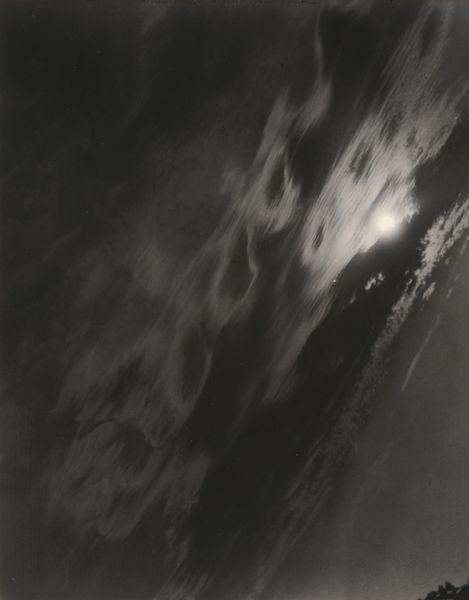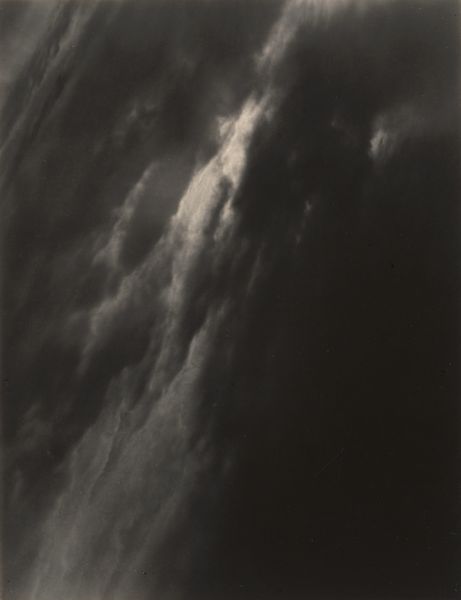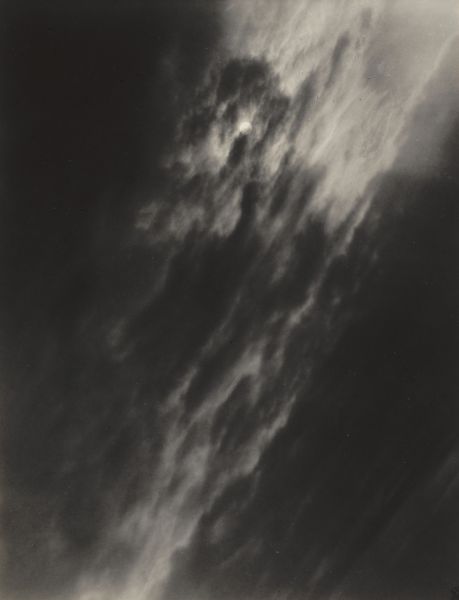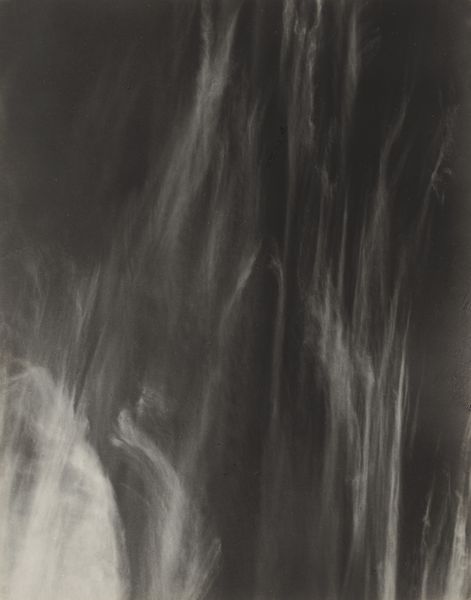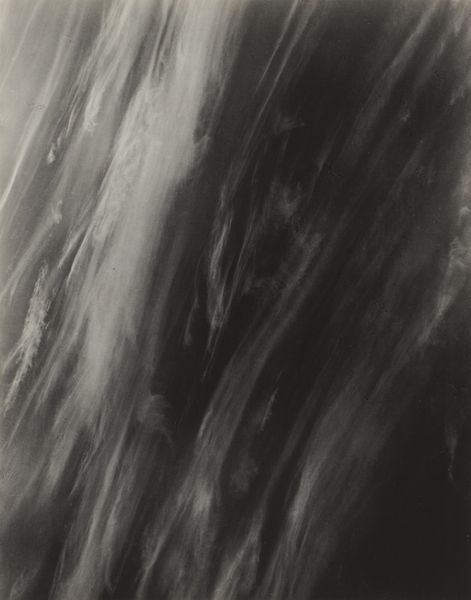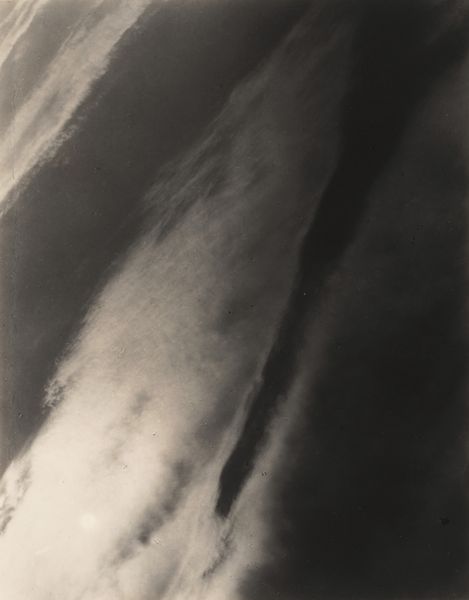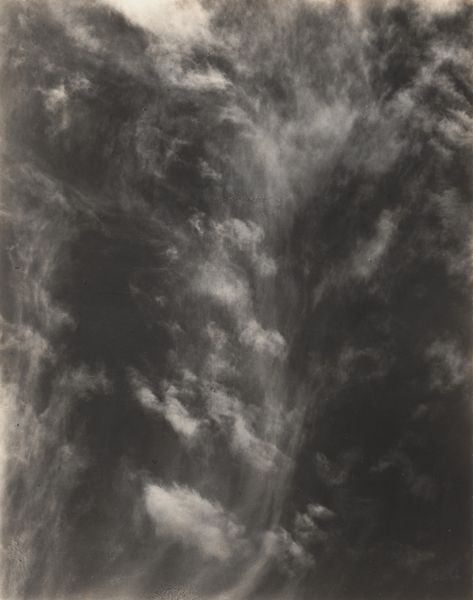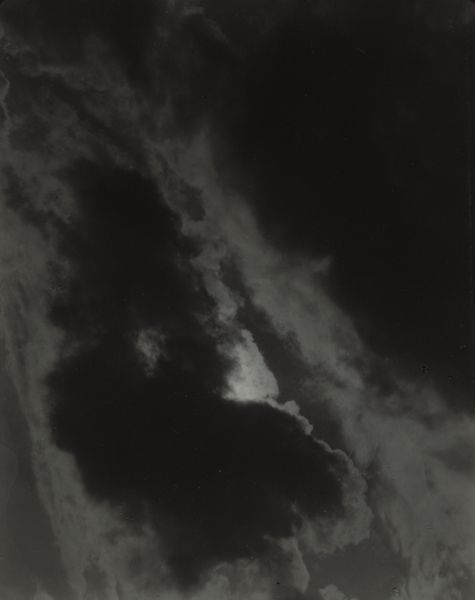
photography, gelatin-silver-print
#
natural shape and form
#
pictorialism
#
landscape
#
eerie mood
#
dirty atmosphere
#
dark monochromatic
#
photography
#
dark shape
#
gelatin-silver-print
#
monochrome photography
#
gloomy
#
abstraction
#
monochrome
#
modernism
#
mist
#
monochrome
#
shadow overcast
Dimensions: sheet (trimmed to image): 11.8 x 9.1 cm (4 5/8 x 3 9/16 in.) mount: 34.5 x 27.6 cm (13 9/16 x 10 7/8 in.)
Copyright: National Gallery of Art: CC0 1.0
Editor: So here we have "Equivalent," a gelatin-silver print by Alfred Stieglitz, from 1931. The monochromatic tones create a somber, almost ghostly landscape, even though it looks to me more like an abstract composition of clouds. What do you see in this piece, beyond the surface level? Curator: For me, it's all about feeling, really, isn't it? Stieglitz wasn't just documenting clouds; he was attempting to capture a feeling, a state of mind, to equate the visible world with his internal landscape. Imagine standing there, alone, camera in hand, attempting to distill something as fleeting as a cloud into a lasting emotion. Editor: So, these cloud photos are not really about clouds at all, then? More like…emotional weather? Curator: Precisely! Think of it like musical notes—he's not composing a song *about* the strings, but about what the vibrations evoke in him, what resonances they spark. Did Stieglitz succeed? Well, that’s for each of us to decide, and I would argue that maybe the picture evokes a slightly different experience on a slightly different viewing. It is constantly in flux, ever in progress. Editor: It’s funny. Now, when I look at it, the lack of a clear subject makes it feel more, not less, personal. I get a sense of someone reaching for something beyond words. Curator: Yes! I like that you perceive the wordless reaching in it. It feels akin to a kind of abstract spiritual experience! That's exactly it. These "Equivalents," as he called them, were his attempts to communicate the incommunicable. It's liberating to look at art in a more intuitive way like this. Editor: Definitely, I never thought I'd find emotional depth in a photograph of clouds!
Comments
No comments
Be the first to comment and join the conversation on the ultimate creative platform.
